Question
A cell has an electromotive force (e.m.f.) of 8.0V and negligible internal resistance. The cell forms part of a circuit, as shown.
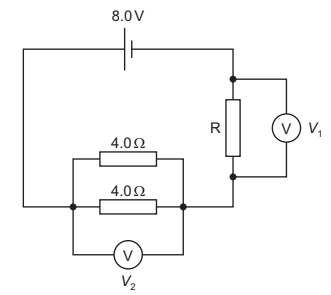
The reading \(V_{1}\) is 4.0V and the reading \(V_{2}\) is also 4.0V.
What is the resistance of resistor R?
A \(0.50\, \Omega\) B \(2.0\, \Omega\) C \(4.0\, \Omega\) D \(8.0\, \Omega\)
Answer/Explanation
Ans:
Question
Three identical cells, each of electromotive force (e.m.f.) E and internal resistance r, are connected as shown.
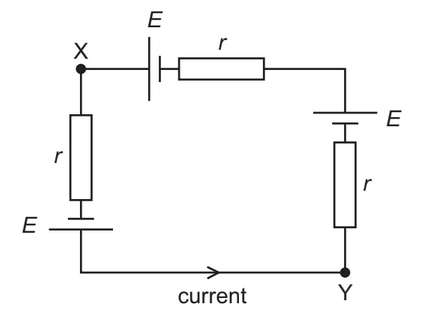
What is the potential difference between points X and Y?
A 0 B E C 2E D 3E
Answer/Explanation
Ans :
Question
Potential differences across two resistors of resistances R1 and R2 are compared using a potentiometer wire (uniform resistance wire) in the electrical circuit shown.
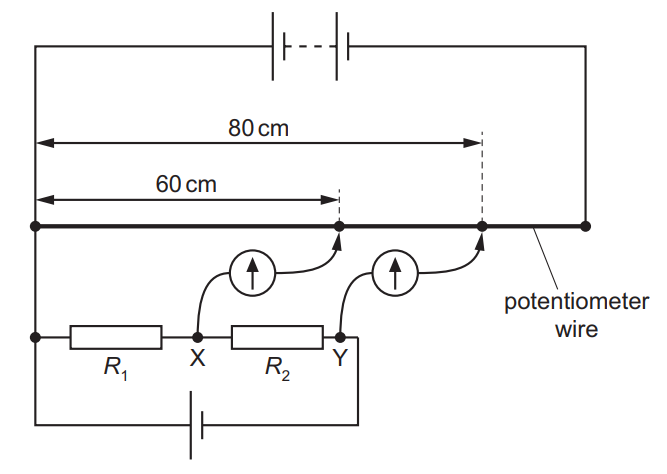
One terminal of a galvanometer is connected to point X. The galvanometer reads zero when its other terminal is connected to a point that is a distance of 60 cm from one end of thepotentiometer wire.One terminal of a second galvanometer is connected to point Y. This galvanometer reads zerowhen its other terminal is connected to a point that is a distance of 80 cm from the same end of the potentiometer wire.
What is the ratio \(\frac{R_{2}}{R_{1}}\)
A \(\frac{1}{3}\) B \(\frac{3}{4}\) C \(\frac{3}{1}\) D \(\frac{4}{3}\)
Answer/Explanation
Ans :
Question
A battery is connected to a potentiometer. The potentiometer consists of a uniform resistance
wire and a sliding contact P.
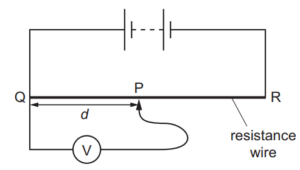
The potential difference (p.d.) V between the sliding contact P and end Q of the wire is measured
using a voltmeter. The sliding contact P is moved from end Q to end R of the wire. Sliding contact
P is distance d from Q.
Which graph shows the variation with distance d of the p.d. V?

Answer/Explanation
Ans
Question
A potentiometer circuit is used to determine the unknown electromotive force (e.m.f.) of a cell X.
In the circuit shown, E is a cell with an e.m.f. that is known accurately. QR is the potentiometer
wire, which has a movable contact S. Contact S is connected to a galvanometer and to cell X.
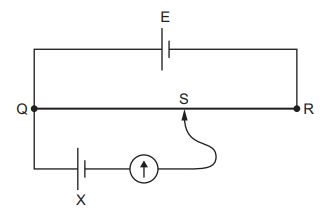
What is not a necessary requirement to determine the e.m.f. of X from the circuit?
A The e.m.f. of cell X must be lower than the e.m.f. of cell E.
B The internal resistance of cell X must be known.
C The lengths QS and QR must be determined accurately.
D The resistance of the wire QR must be proportional to its length.
Answer/Explanation
Ans:
